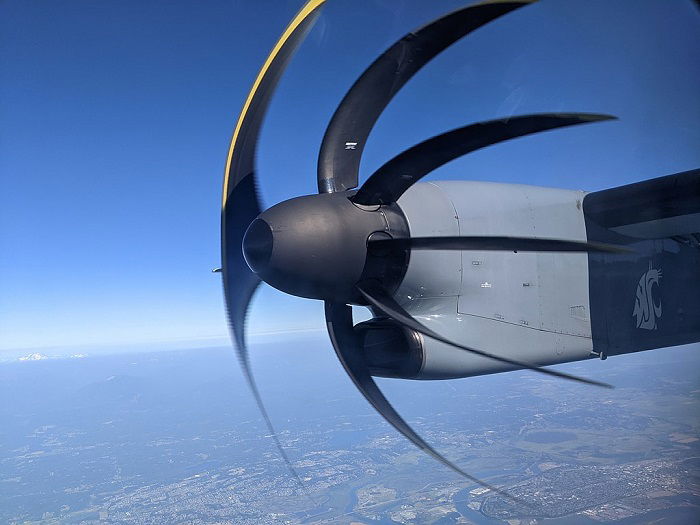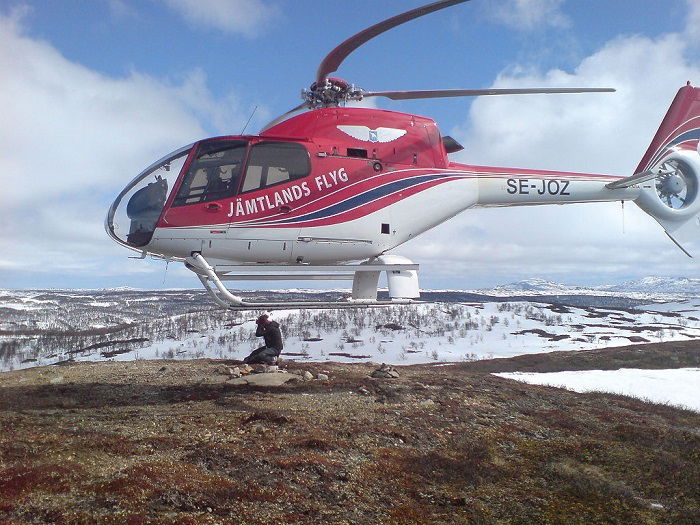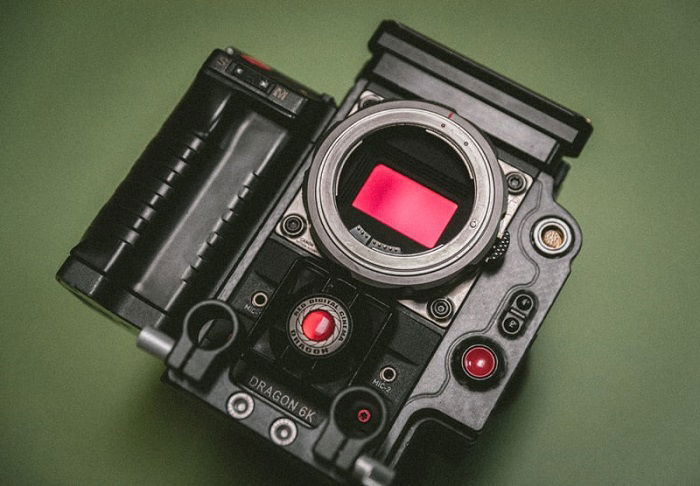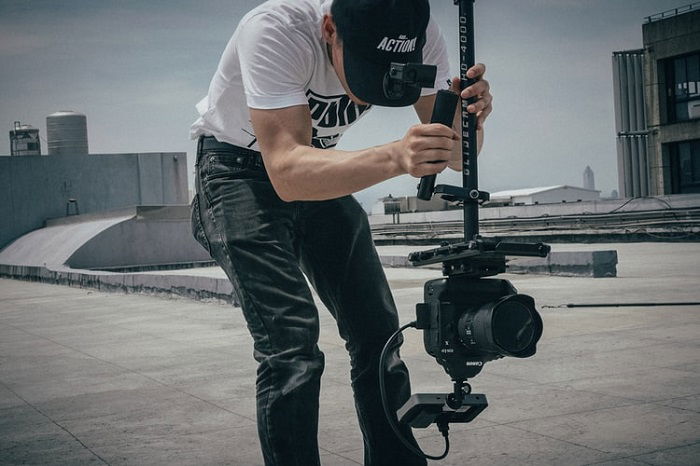Let’s take a deep dive into the rolling shutter effect and explain what it is and why it happens. We’ll also tell you what you can do to avoid it in your photography.
What is the Rolling Shutter Effect?
If you shoot a video of something fast-moving with a digital camera, the subject might appear warped or misshapen. This is rolling shutter distortion. If you film an aeroplane propeller rotating at full speed, the blades look as if they’re bending or stretched in the footage. They appear to bend back on themselves. And they have an elastic quality. You can see the same thing on a smaller scale too. For example, if you film a fidget-spinner with a smartphone camera, you’ll see the same warping effect. The blades of the spinner will stretch and bend. And the fast it spins, the stronger the effect. If you spin a coin on a flat surface, you’ll see a spiral effect when you watch the footage. And if you film guitar strings vibrating, they appear to bend all the way along like a soft zig-zag. The strings look like they’re wobbling, giving them a “jello effect.” If the object is moving very quickly, some sections can appear completely separated from the main body. These UFOs are called rolling shutter artifacts.
What Causes Rolling Shutter Effect?
When you take a photo with a digital camera, the whole sensor reacts at the same time. Light comes through the lens and hits the sensor at one moment. The entire frame is captured at that one moment. When all the pixels of the sensor react simultaneously, this is called a global shutter. The global shutter mode gives you a snapshot of a precise moment in time. In global shutter mode, the pixels behave like a CCD sensor. But when you use a digital camera to shoot video, the sensor does not behave in the same way. A CMOS sensor, standard in DSLRs and smartphones, uses a different method when recording video. Rather than using all pixels at once, as with a global shutter, CMOS sensors only use one row at a time. One row of pixels will activate. Then, a fraction of time later, the row below will activate. This sequence continues until it gets to the bottom of the sensor. Then it starts at the top again, and the process loops. This is where the term rolling shutter comes from. It’s a similar principle to a flatbed scanner. The scanner scans from one side to the other collecting the data of your image. The CMOS sensor is doing the same thing on repeat. It’s continuously scanning from one side to the other. If you move the object when your scanning, the final image will be warped and distorted. If you move the object in the same direction as the sensor, you’ll get a stretched image. If you go in the opposite direction, the image will be squashed. The same principles apply when you’re filming with your digital camera. The sensor captures different sections of the scene at slightly different times. When everything is still, this isn’t a problem. But fast-moving objects suffer from the rolling shutter effect.
CMOS vs CCD Sensors
Most modern cameras today use CMOS sensors. We’ve already mentioned DSLR cameras and smartphones. But top-of-the-range mirrorless cameras also use sensors that can fall victim to the rolling shutter effects. The Sony A7R IV is a full frame mirrorless camera with an image resolution of 61MP. That’s excellent image quality. But A7R IV still uses a CMOS sensor. So even though it’s full frame and powerful, it still suffers from rolling shutter effects. CCD sensors, or global shutter cameras, don’t suffer from the same effects. Global shutters capture the entire image all at once. CCD sensors used to be common in digital cameras. But now, the CMOS sensor has taken over. CMOS sensors now outperform CCDs in many areas. The image processing is faster, which allows a camera to have a quicker burst speed. This image sensor type also helps improve autofocus ability. And the overall image quality has a higher potential. This is also true for video. Despite the risk with rolling shutters, the overall video quality is better from a CMOS and a CCD sensor. That’s why most modern video cameras favour CMOS sensors. Some cameras do still carry a CCD sensor. But these are often specialist cameras for niche areas of photography. The global shutter is still favoured by astrological photographers, for example.
How to Avoid Rolling Shutter Effect
Rolling shutter effects can be a nightmare for photographers and videographers. But even when using rolling shutter cameras, there are ways to combat the effects. The place to start is with your camera shutter speed. To avoid image warping, you should set your shutter speed to twice your frame rate. Most cameras shoot at a rate between 20 and 30 frames per second. A shutter speed of 1/50 of a second should be about right. But don’t venture any slower. Anything slower than that won’t give the sensor enough time to capture the image. When shooting video, you also want to avoid a shutter speed that is too fast. Too much motion blur can ruin your footage. But too little can also be a problem. Motion blur is something the human eye expects when watching fast-moving subjects. If there is no bur at all, it will seem strange and unnatural. You also need to keep the camera as still as possible. To minimise camera movement, use a tripod or Steadicam. If your camera has image stabilization built-in, this will also help. Light is another important factor when shooting video with rolling shutter cameras. The more light you have, the less rolling shutter effect you’ll experience. So if you’re shooting indoors, you might need additional lighting.
How to Fix Rolling Shutter Effects
With rolling shutter effects, prevention is better than the cure. But sometimes, it just can’t be helped. And there are ways to fix rolling shutters in post-processing. Rolling shutter artifacts are often found at the very edges of the image. If you can afford it, you can crop to a tighter frame. You simply remove the affected areas. Cropping is a simple solution. But it’s not always possible. Many videographers use Adobe Premiere Pro editing software. This program has a specific Rolling Shutter Repair tool aimed at reducing image distortion in video footage. Other programs are available. But Premiere Pro sets the industry standard.
Conclusion
The rolling shutter effect is something we’ve all seen. But before now, it has been a mystery to many people. It’s an unfortunate feature of modern digital cameras and the CMOS sensor. They are great machines. But they’re not yet perfect. But don’t fear. There are measures you can take against the rolling shutter effect. And you can combat it in post-processing too. Don’t let the rolling shutter effect stop you from getting the shots you want. If you want to learn more about the basics of photography, check out our Photography for Beginners eBook.






